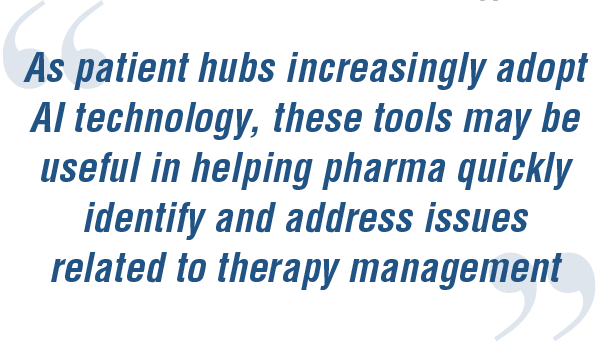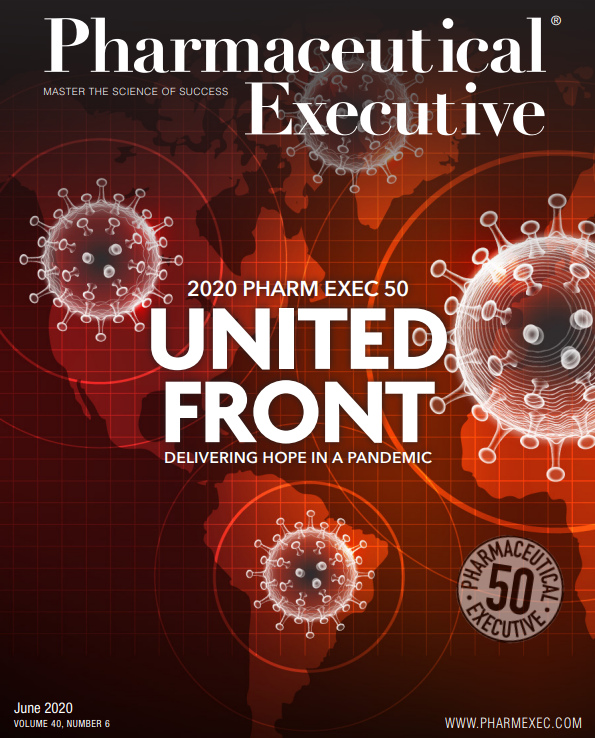- Sustainability
- DE&I
- Pandemic
- Finance
- Legal
- Technology
- Regulatory
- Global
- Pricing
- Strategy
- R&D/Clinical Trials
- Opinion
- Executive Roundtable
- Sales & Marketing
- Executive Profiles
- Leadership
- Market Access
- Patient Engagement
- Supply Chain
- Industry Trends
COVID & Chronic Disease: Meeting the Needs of Vulnerable Patients
Pharmaceutical Executive
Pharma companies are in a unique position to support and educate at-risk populations through patient services hubs.
In times of a public health crisis, the cracks in the system that leave many patients vulnerable can become even more apparent. While our country continues to grapple with the uncertainty of COVID-19 and its implications on our current healthcare system, patients with chronic illnesses are at a particular risk of declining health. Pharmaceutical companies, with the support of patient hubs, are well-positioned to identify patients who are most at risk of experiencing a disruption in their therapy. With the proper technology and capabilities in place, pharma companies can recognize potential barriers to care and address the needs of their patient populations through additional support and assistance offerings.
Social and economic changes are putting more patients at risk
The first step in meeting patient needs is to identify those who are or may be at risk of falling off their medical therapy. It is important to consider how the sudden changes of a public health crisis may impact patients’ lives and present new challenges or barriers to care. Our country is currently in the midst of record-high unemployment rates with millions of people filing for unemployment1, which has resulted in many patients losing health insurance. The growing income gap created by COVID-19 is expected to leave each uninsured patient with up to $74,310 in hospital bills2 should they contract the virus. While Medicaid offers an alternative option for many facing unemployment, in states that did not expand Medicaid, 40% will likely remain uninsured.3 Patients on medications for chronic illnesses may face difficult decisions about whether to continue medical therapy if their incomes have decreased or their health coverage has changed.
At the same time, patients may also face limited access to healthcare providers. Across the US, most healthcare facilities are seeing a decline in elective surgeries, procedures, and preventive care visits4 as patients and clinical staff fear unnecessary exposure to COVID-19 and even a lack of comfort with the current standard of telemedicine. As most non-critical care appointments move to a virtual format5, elderly patients or those who have limited access to technology may face additional barriers to care. The current requirements for social distancing are not only resulting in delays in diagnosis and subsequent treatment, but also difficulties with adherence to current therapies.
Without the same level of interaction with their doctors and other healthcare providers, some patients may be more likely to fall off medical therapy if they’re experiencing challenges, such as medication side effects.
Analytics can help identfiy patients most at risk
Pharma companies may be in a unique position to support at-risk patients with chronic illnesses at this unusual time, particularly if they already have patient support programs in place with a patient services hub. Today, many patient hubs collect and aggregate vast sets of patient information, from the more traditional sources of enrollment and insurance data, to newer sources, including patient call data.
When analyzed properly, this information enables patient hubs to flag early warning signs when a patient is at risk of falling off therapy.
Performing electronic benefits verification can quickly identify patients who have experienced changes in health insurance coverage. While this is typically done during reverification season en masse, this technology could be

used now to identify patients who may be in need of additional assistance due to the pandemic.
As patient hubs increasingly adopt artificial intelligence technology, these tools may be useful in helping pharma companies to quickly identify and address issues related to therapy management. For example, natural language processing technology can be used to identify specific patient concerns or challenges by analyzing recorded interactions between patients, payers, and clinicians for key terms and adjacencies. In response to the pandemic, these tools have been adapted to capture coronavirus-related words and phrases to identify patients who are using language that indicates financial hardship or barriers to care.
This data can be used to help drug manufacturers plan additional patient support and education tailored to the needs of their patients.
Consider new and expanded programs to support patients
In addition to identifying patients who may be at risk, pharma organizations also have an opportunity to provide broader support at a time when more patients may need help accessing and managing their chronic conditions. A few specific steps for consideration are as follows.
• Expand patient assistance programs. Many pharma companies offer patient assistance programs (PAPs), which provide financial assistance to help qualifying patients get access to free or reduced-cost medications. Most PAP programs base eligibility at least partially on income, with the majority of programs requiring proof-of-income6 documents such as tax returns. As our country navigates through the largest “layoff spree” in its history7, pharma sponsors of PAPs have an opportunity to re-evaluate income verification processes and consider broadening the parameters to meet the needs of their changing patient population right now. In addition, drug companies may want to consider, for appropriate products, extending their dispenses of free medicine from 30-day to 60- or 90-day to maintain greater continuity of therapy.
• Consider establishing a “bridge” program. Due to the significant increase in unemployment since the start of the pandemic, a record number of patients may be finding themselves without health insurance, at least for the short term. Interruptions in health coverage can often lead to disruptions in therapy, particularly for patients taking higher-cost specialty medications. A “bridge” assistance program can help provide continuity of care and prevent disease regression by delivering temporary help with the cost of medication during a gap in coverage. A bridge program may be particularly helpful for patients during the COVID-19 pandemic, as many people are likely to be rehired once businesses reopen.
• Evaluate how clinical nurse educators can support care. Some patients may be having fewer interactions with their healthcare providers due to social distancing guidelines in place. While there is no substitute for medical guidance from a physician, a pharma-sponsored clinical nurse educator team working in a patient services hub may play a complementary role in supporting patients with management of therapy during this unusual time. Clinical nurse educators are trained medical professionals, usually registered nurses (RNs) who work on behalf of pharma companies and can offer guidance to patients who have questions or concerns about their prescribed treatment. Clinical nurse educators, available to patients by phone, can be an additional resource to reinforce the therapy instructions that patients have received from their physicians, and to answer medication-related questions. Nurse educators can also alert recently unemployed patients to the existence of manufacturers’ patient assistance programs for potential additional financial support or free drug program options. These resources provide supplemental understanding for patients undergoing therapy and have been shown to increase adherence to treatment.
Look to the future
As our country and healthcare system continue to evolve with the current public health crisis, pharma companies have an unprecedented opportunity to support continuity of care for patients with chronic diseases and help prevent disease regression. The critical factors for making these patient programs effective are having the data and analytics to identify the patients most at risk, and the expertise and technology to deliver personalized support to patients. Patient hubs are uniquely qualified to provide remote, patient-specific support to help patients from end to end through their medical treatment journeys.
Rebecca Cotton, Executive Director of Data Analytics and Intelligence, Cardinal Health Sonexus Access and Patient Support
References
1. Chaney, S., and Morath, E. (April 2, 2020). Record 6.6 Million Americans Sought Unemployment Benefits Last Week. https://www.wsj.com/articles/another-3-1-million-americans-likely-sought-unemployment-benefits-last-week-11585819800
2. The Projected Economic Impact of the COVID-19 Pandemic on the US Healthcare System. (March 25, 2020). https://s3.amazonaws.com/media2.fairhealth.org/brief/asset/COVID-19 - The Projected Economic Impact of the COVID-19 Pandemic on the US Healthcare System.pdf
3. Garrett, B., and Gangopadhyaya, A. (May 4, 2020). How the COVID-19 Recession Could Affect Health Insurance Coverage. https://www.rwjf.org/en/library/research/2020/05/how-the-covid-19-recession-could-affect-health-insurance-coverage.html?cid=xem_other_unpd_ini:quick strike_dte:20200504_des:quick strike
4. Norvell, K., and O’Donnell, J. (April 2, 2020). Thousands of US medical workers furloughed, laid off as routine patient visits drop during coronavirus pandemic. https://www.usatoday.com/story/news/health/2020/04/02/coronavirus-pandemic-jobs-us-health-care-workers-furloughed-laid-off/5102320002/
5. Galewitz, P. (March 27, 2020). Telemedicine Surges, Fueled By Coronavirus Fears And Shift In Payment Rules. https://khn.org/news/telemedicine-surges-fueled-by-coronavirus-fears-and-shift-in-payment-rules/
6. Choudhry, N. K., Mulcahy, A. W., Johnson, K., Weinberg, M., Colla, C. H., Mainor, A. J., Starner, C. I. (May 1, 2009). Drug Company–Sponsored Patient Assistance Programs: A Viable Safety Net? https://www.healthaffairs.org/doi/10.1377/hlthaff.28.3.827
7. Lambert, L. (April 16, 2020). How each industry is fueling the U.S. unemployment rate in one chart. https://fortune.com/2020/04/15/unemployment-rate-claims-benefits-coronavirus-layoffs-hospitality-retail-transport-manufacturing-us/

Delivery and Disruption: Navigating a Changing Care Terrain
September 16th 2024The diversification of site-of-care delivery models is accelerating rapidly, creating new go-to-market implications for drug manufacturers—but also new opportunities to drive more fundamental innovation in engagement and access strategies.
Pharm Exec Exclusive: Mark Cuban Talks Drug Pricing
June 7th 2024Now more than two years into launching his alternative and transparent drug payment model, the longtime entrepreneur, in an interview with Pharm Exec, discusses the prescription drug cost landscape and shares his recipe for true disruption to the pharma pricing machine.
